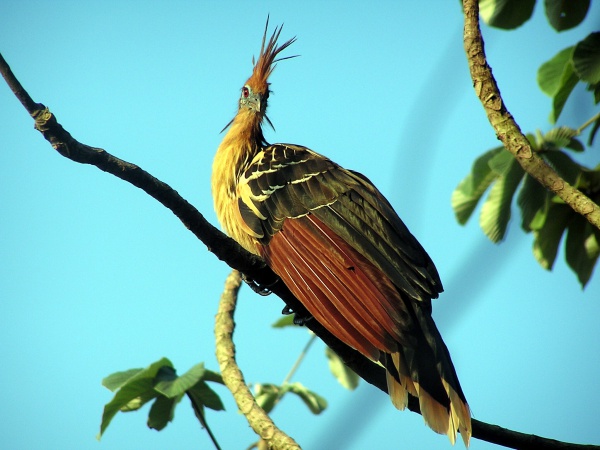Facts About Hoatzin
The Hoatzin, often nicknamed the reptile bird, skunk bird, stinkbird, or Canje pheasant, is a remarkable tropical bird native to South America's Amazon and Orinoco basins. These birds inhabit swamps, riparian forests, and mangroves. One of the most intriguing features of Hoatzin chicks is the presence of claws on two of their wing digits.
The Hoatzin is the sole species in the genus Opisthocomus and belongs to the family Opisthocomidae, making its classification a longstanding subject of scientific debate.
In terms of appearance, the Hoatzin, which is approximately the size of a pheasant, is distinctive with its blue face, maroon eyes, and a spiky, rufous crest atop its head. As a herbivore, it primarily consumes leaves and fruits. This diet, combined with a specialized digestive system that ferments plant material, gives the bird its characteristic foul odor, earning it the nickname "stinkbird."
Hoatzins are quite vocal, known for their noisy calls and peculiar behaviors, such as spreading their wings. Their place in the avian family tree has been widely debated, but genetic studies suggest that they diverged on their own evolutionary path around 64 million years ago.
The Hoatzin's unique traits extend further. They feed their chicks regurgitated fermented food, and the young birds use their wing claws to climb and evade predators. Although Hoatzins are sometimes hunted by humans, they are not considered endangered and remain relatively common in their natural habitat. Notably, the Hoatzin is also the national bird of Guyana.
Fossil records indicate the ancient lineage of the Hoatzin, suggesting that their ancestors once inhabited areas beyond their current range. Researchers continue to study the Hoatzin's genome to better understand its evolutionary history and unique adaptations.

 French Guiana
French Guiana